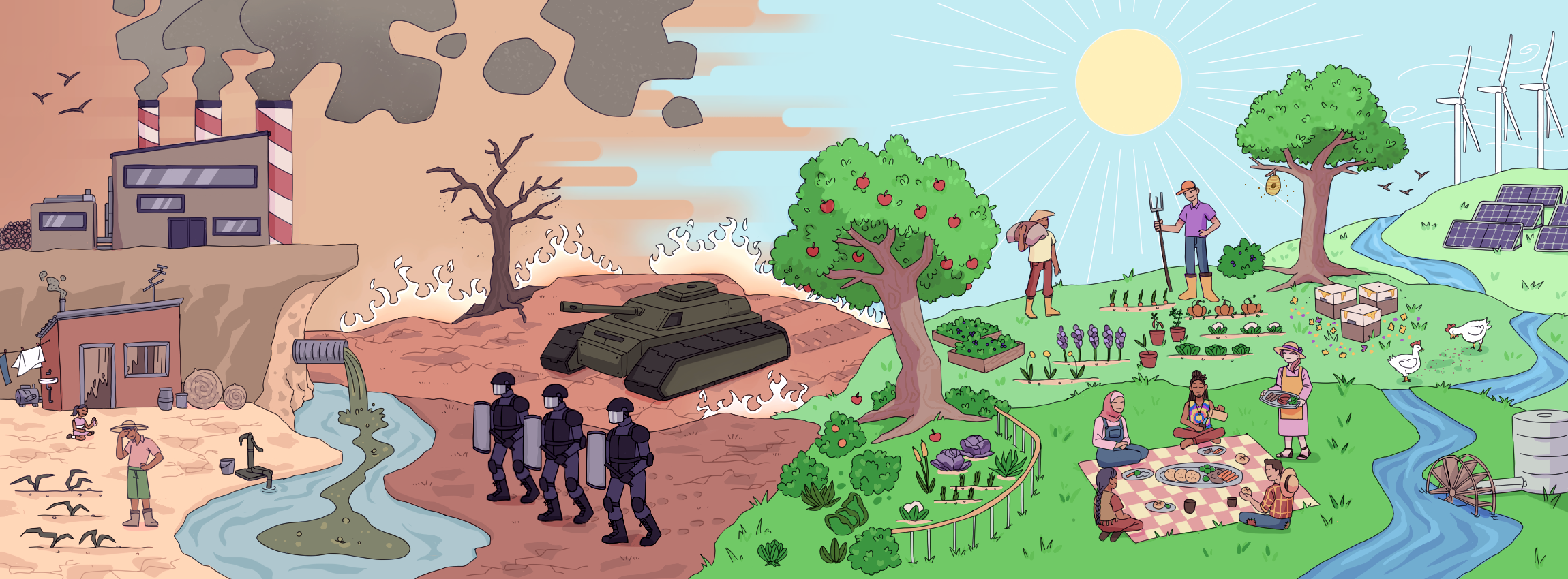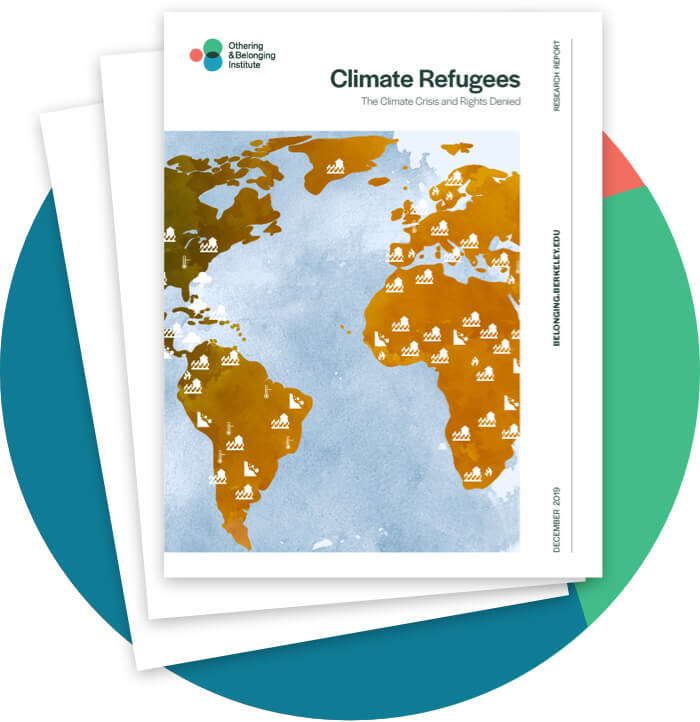Panama
Introduction to Panama
Panama, a small, “S-shaped” country in Central America, has a population of 4.47 million,1
of which 30% is rural.2
Due to its unique shape and location near the equator, Panama faces dispersed areas of tropical rainforest, tropical monsoon, and tropical savanna climates throughout the country.3
Panama is subject to extreme weather events like heavy rainfall, floods, droughts, wildfires, cyclones, tsunamis, and frequent exposure to the El Niño-Southern Oscillation phenomenon.4
Panama City, the country's political, economic, and administrative center, houses 40% of the country’s population and is home to the Panama Canal—a critical component of global supply chain operations.5
It handles about 5% of global maritime trade,6
indirectly contributes to 5.2% of GDP,7
and nearly 25% of all Panamanian employment is related to canal activities.8
Additionally, Panama has three core Special Economic Zones (SEZs) and 16 other free trade zones scattered around the country,9
with its Colon Free Zone (CFZ) being the largest free-trade zone in the Western Hemisphere with over 2,500 businesses.10
The service sector is crucial to the Panamanian economy, accounting for 83% of GDP, 90% of exports, and 65% of total employment.11
Panama sees its population as majority Mestizo, at 65%, followed by sizable populations of Indigenous, Black, Mulatto, and White peoples.12
Mapping Major Climate Events and Climate-Induced Displacement
Panama is extremely susceptible to the effects of the climate crisis, ranking 14th among countries most exposed to multiple hazards based on land area,13
with almost 15% of its total area
exposed.14
It also ranks 35th among countries with the highest percentage of the total population considered at relatively high mortality risk from multiple hazards,13
at 12.5%.15
Flooding constitutes the most common natural hazard in Panama; the Hazard Risk for areas with the highest vulnerability for flood mortality lies on the west coast and in the central portion of the country surrounding Panama City, which has enormous implications for economic sustainability, sustainable development, and the safety of millions of people.16
Between 2000 and 2006, 8 floods caused 62,678 people to be affected and over $8.8 million in damage.17
A further 13,000 Panamanians were reported as internally displaced due to natural disasters between 2008 and 2023.18
Droughts are also a significant factor for the country, as the severity of El Niño fluctuations has caused Panama to have several years of low precipitation, with 2023 being the driest year on record.19
The climate crisis can cause such El Niño events to become 15-20% stronger under high emission scenarios.20
The drying up of Gatún Lake and Alajuela Lake has several implications for the sustainability of the Panama Canal and for the millions of people who rely on it for drinking water and hydroelectric power.21
This caused hydroelectricity prices to skyrocket and increased dependency on fossil fuels to generate electricity, directly going against its mitigation efforts to reduce emissions.22
Overall, the escalation of the climate crisis disproportionately affects marginalized communities in Panama, with more frequent floods and droughts threatening their living conditions and employment possibilities.23
This is already the case for the Indigenous Guna people in Panama’s San Blas archipelago, as 300 families were forced to relocate in June 2024, with another 38,000 projected also to relocate shortly.24
Mapping the Costs of the Climate Crisis
The GDP of Panama is $83.4 billion,25
while the GDP per capita is $18,700,26
giving it the highest GDP per capita in Central America and one of the highest in Latin America. Although the country has seen historical financial success and significant poverty alleviation, Panama must heed the economic costs of the climate crisis. Historically, between 1982 and 2008, Panama faced 32 natural disasters that resulted in economic damages of $86 million.27
The disruption of the Panama Canal has ramifications for Panama and the rest of the world. Due to decreased precipitation rates and El Niño’s impacts, shipping delays, capacity limitations, and maintenance needs are all becoming increasingly frequent for the canal.28
This led to $40 million in loss in 2016, $15 million in lost revenue in 2019, and a potential loss of $700 million in the first semester of 2024.29
Due to its global supply chain importance, a one-week disruption of the Panama Canal could cause a 0.007% (USD $1.5 billion) loss in GDP for the United States and a loss of 0.01% (USD $1.78 billion) of Chinese GDP.30
Its neighbors like Costa Rica and Colombia would face the greatest consequences, losing 0.29% and 0.2% of their GDPs, respectively.31
Other key sectors face risk of significant climate impacts. For instance, although the agricultural sector only contributes 2.4% of GDP,32
it makes up almost 18% of total employment,33
putting at risk the livelihoods of thousands of Panamanians. As extreme weather events like floods and droughts become more common, they severely threaten the country's present and future crop yields and food security.
Mapping Resilience and Mitigation Pathways
Despite being responsible for only 0.045% of global GHG emissions,34
Panama continues to work towards reducing emissions and mitigating the damage of the climate crisis. It should be noted that 38.66% of Panama’s territory is protected35
and has a high forest coverage of 65.4%, making it one of the only carbon-negative countries in the world since its forests act as carbon sinks that absorb more GHG emissions than emitted.36
Regarding domestic mitigation tactics, Panama aims to reduce energy emissions by 11.5% by 2030 and 24% by 2050.37
Panama also aims to restore 50,000 hectares of national forests by 2050, helping absorb another 2.6 million tons of carbon dioxide.38
In terms of energy infrastructure, Panama aims to generate 15% of its total energy production through renewable sources by 2030 and 50% by 2050, illustrating a strong commitment to the energy transition.39
In terms of financial infrastructure, the country also has the most successful sustainable finance market in Central America and the Caribbean, with 13 green bond issuances, including one valued at $200 million in 2023.40
Panama is developing a National Carbon Market in alignment with its NDC targets to facilitate domestic emission credits while also implementing sustainable finance tax strategies to mobilize private capital and investors towards sustainable economic goals.41
Necessary Changes
While Panama has illustrated a commitment to implementing green investment strategies, one set of necessary changes should entail a greater focus on public and not private investment strategies.42
Additionally, Panama must continue to identify and implement new adaptations for the future while strengthening existing strategies. Foremost, water storage capacities must be significantly improved to capitalize on increased precipitation rates, as the current distribution system loses up to 40% of all transported water.40
Water shortages also pose a significant challenge to the Panama Canal. However, enhancing water management techniques like incorporating cross-fillings, utilizing short chamber lockages, and constructing new dams and reservoirs can help address this issue.43
Although Panama has pledged to transition to a low-carbon energy source, the energy sector still accounts for 49% of all GHG emissions, which can be mitigated through increased sustainable investment and stricter regulations.22
Further, although it comprises a minimal part of GDP and economic makeup, the LULUCF and agricultural sectors make up 35% of GHG emissions, highlighting the need for transformation in these areas; this can be done through more R&D in pest and disease control, increased irrigation efficiency, improved seed variabilities, and expanded coverage of meteorology systems.44
Citations
- 1“Population, total – Panama,” The World Bank, December 1, 2024,
https://data.worldbank.org/indicator/SP.POP.TOTL?locations=PA
- 2“Rural Population, total – Panama,” The World Bank, accessed December 1, 2024,
https://data.worldbank.org/indicator/SP.RUR.TOTL.ZS?locations=PA. - 3“Climate Change Knowledge Portal – Panama,” The World Bank, accessed December 1, 2024,
https://climateknowledgeportal.worldbank.org/country/panama. - 4“Risk - Historical Hazards - Panama,” The World Bank, accessed November 25, 2024,
https://climateknowledgeportal.worldbank.org/country/panama/vulnerabili…. - 5 “Panama City,” Britannica, accessed December 1, 2024,
https://www.britannica.com/place/Panama-City. - 6“Panama Canal Traffic by Shipment Category and Tonnage,” Visual Capitalis, accessed December 1, 2024,
https://www.visualcapitalist.com/panama-canal-traffic-by-shipment-categ…. - 7“WT/TPR/S/421 • Panama - 8 - SUMMARY,” WTO, accessed December 1, 2024,
https://www.wto.org/english/tratop_e/tpr_e/s421_sum_e.pdf. - 8“Impact of the Panama Canal on the Panamanian economy,” AHOAJ, accessed December 1, 2024,
https://www.researchgate.net/publication/377210554_Impact_of_the_Panama… - 9“2020 Investment Climate Statements: Panama,” US Department of State, accessed December 1, 2024,
https://www.state.gov/reports/2020-investment-climate-statements/panama…. - 10“Panama Special Economic Zones,” ITA, accessed December 1, 2024,
https://www.trade.gov/market-intelligence/panama-special-economic-zones. - 11 “Climate Change Knowledge Portal – Panama,” The World Bank.
- 12“Panama,” CIA Factbook, accessed December 1, 2024,
https://www.cia.gov/the-world-factbook/countries/panama/#economy. - 13 a b “Risk - Historical Hazards - Panama,” The World Bank.
- 14“Disaster Risk Management - Panama Notes,” GFDRR, accessed December 1, 2024,
https://www.gfdrr.org/sites/default/files/publication/drm-country-note-…. - 15“Disaster Risk Management - Panama Notes,” GFDRR.
- 16“Vulnerability, Risk Reduction, and Adaptation to Climate Change,” GFDRR, accessed December 1, 2024,
https://www.preventionweb.net/media/93453/download?startDownload=202412…. - 17Ibid (i): 1
- 18 “Displacement Data - Panama,” IDMC, accessed December 1, 2024,
https://www.internal-displacement.org/countries/panama/. - 19“Panama: Selected Issues; IMF Country Report,” IMF, accessed December 1, 2024,
https://www.imf.org/en/Publications/CR/Issues/2024/06/27/Panama-Selecte…. - 20“Drought in Panama is disrupting global shipping. These 7 graphics show how,” Woodwell Climate Research Center, accessed December 1, 2024,
https://www.woodwellclimate.org/drought-panama-canal-7-graphics/ - 21Ibid (ii): 2
- 22 a b “Panama: Selected Issues; IMF Country Report,” IMF.
- 23“Vulnerability, Risk Reduction, and Adaptation to Climate Change,” GFDRR.
- 24“The Cost of Climate Change: Forced Relocation in Panama’s San Blas Islands,” Catalyst Planet, accessed December 2, 2024,
https://www.catalystplanet.com/travel-and-social-action-stories/the-cos…. - 25“Panama MPO,” The World Bank, accessed December 2, 2024,
https://thedocs.worldbank.org/en/doc/e408a7e21ba62d843bdd90dc37e61b57-0…. - 26Ibid (iii): 3
- 27“Risk - Historical Hazards - Panama,” The World Bank.
- 28“Building Resilience to Natural Disasters and Climate Change,” IMF, accessed December 2, 2024,
https://www.elibrary.imf.org/view/journals/002/2024/189/article-A002-en…. - 29Ibid (V): 4
- 30“Drought in Panama is disrupting global shipping. These 7 graphics show how,” Woodwell Climate Research Center.
- 31Ibid (VI): 5
- 32“Panama,” CIA Factbook.
- 33“Vulnerability, Risk Reduction, and Adaptation to Climate Change,” GFDRR.
- 34“Panama,” Climate and Clean Air Coalition, accessed December 3, 2024,
https://www.ccacoalition.org/partners/panama. - 35“Panama - Country Profile,” Convention on Biological Diversity, accessed December 3, 2024,
https://www.cbd.int/countries/profile?country=pa#:~:text=Protected%20ar…. - 36 “Panama,” Climate and Clean Air Coalition.
- 37“IGES NDC Database,” Institute for Global Environmental Strategies, accessed December 3, 2024,
https://www.iges.or.jp/en/pub/iges-indc-ndc-database/en. - 38Ibid (VII): 6
- 39“Panama: Energy system of Panama,” IEA, accessed December 3, 2024,
https://www.iea.org/countries/panama - 40 a b “Panama: Selected Issues; IMF Country Report,” IMF.
- 41Ibid (VIII): 7
- 42 “The new ‘bond-age’, climate crisis and the case for climate reparations: Unpicking old/new colonialities of finance for development within the SDGs,” Geoforum Journal, accessed December 4, 2024,
https://www.sciencedirect.com/science/article/abs/pii/S0016718521002499. - 43“Panama Canal prepares for the impact of climate events,” Canal de Panama, accessed December 4, 2024,
https://pancanal.com/en/panama-canal-prepares-for-the-impact-of-climate…. - 44Ibid (VIIII): 8


